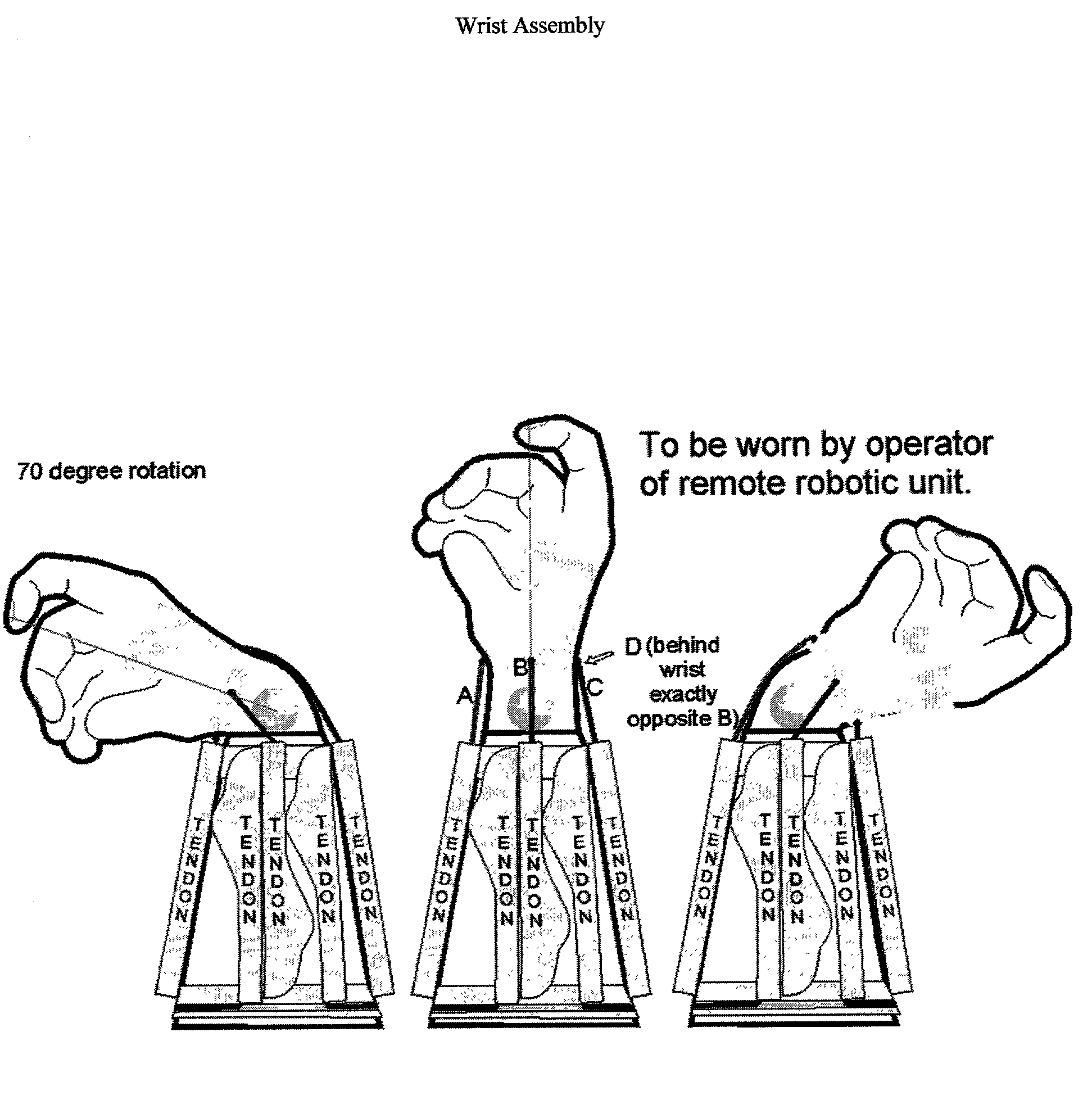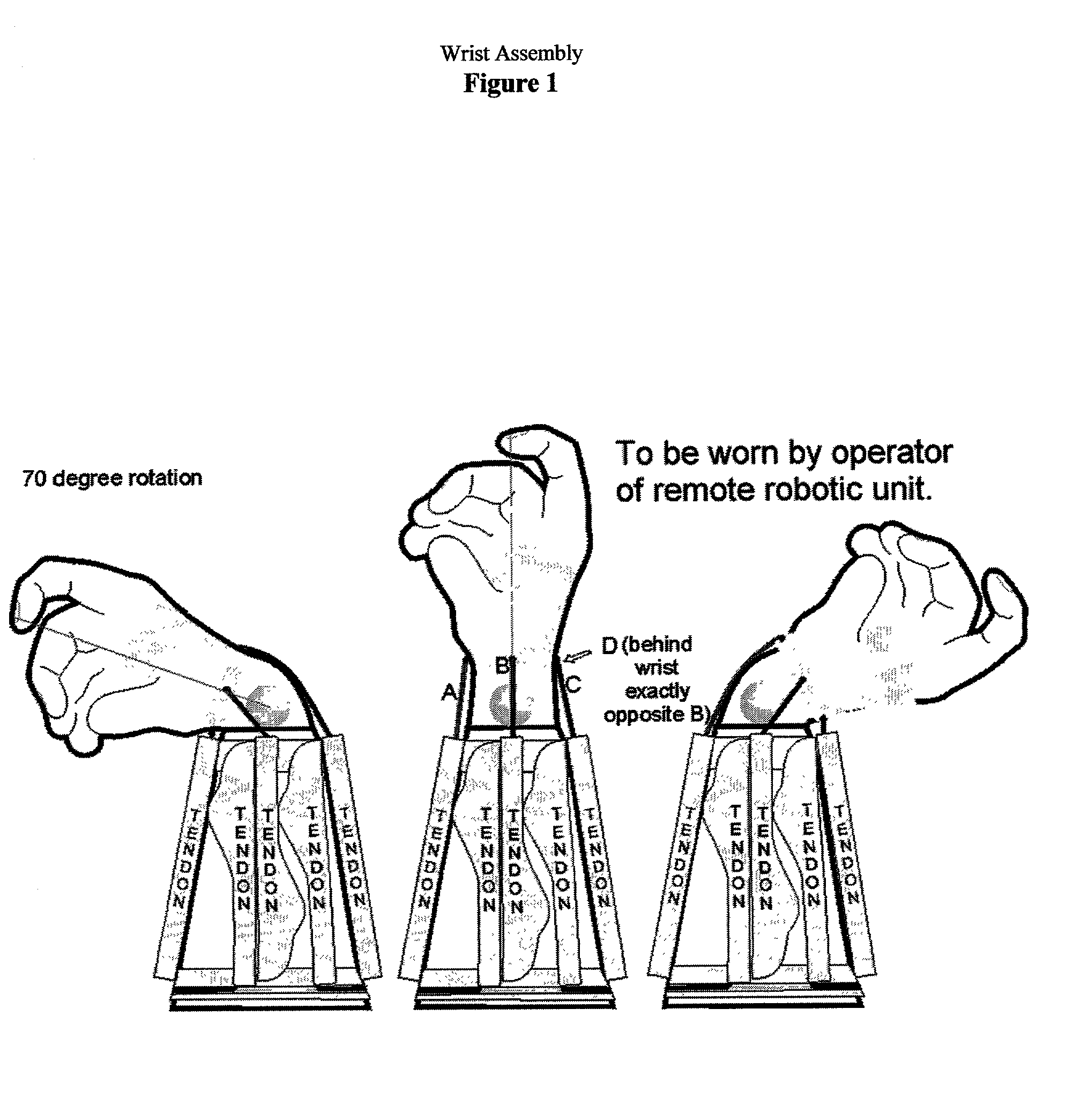Natural robot control
a robot control and robot technology, applied in the field of natural robot control, can solve the problems of overextending the cut or causing the cut to be too shor
- Summary
- Abstract
- Description
- Claims
- Application Information
AI Technical Summary
Benefits of technology
Problems solved by technology
Method used
Image
Examples
case 1
[0123] If P3=P2.
[0124] Either no motion occurred since the last end of phase IV or it was self-negated by the movement of the local during phase 1,2 and 3, if any. No physical adjustment is necessary. However, resistance pressure is another matter. In this embodiment the remote actuator increases angle by increasing hydraulic pressure and maintains position by continued but minimal required positive pressure after position is achieved. If the remote actuator had to exert a force (which can be positive or negative--pressure or vacuum) of F2 to maintain position at the remote, the local would now at this instant assume a pressure of -1*F2 plus or minus special equipment adjustments (assuming a joint that is not controlled by offsetting actuators like the tendons below but is simply pushed or pulled by positive pressure or a vacuum).
[0125] Special equipment adjustments apply to most force measurements and will slightly increase or decrease the pressure adjustments given to accommodate...
case3
[0131] IfP2>=P3 and P3>=P1
[0132] Here the remote complies or even over-complies (usually for the sake of speed) with a local order to advance but the user's continued motion during phase 2 and 3 did not make up for it. If P2=P3, no adjustments will be necessary. Otherwise, while adjustments will be very minor, the local will now be further accelerated in its current direction of motion to the position P2 so the local user will be completely caught up and perfectly in sync with the remote. The resistance pressure will be applied. Again, the resistance will be the relative negative of F2 but, since over-compliance typically would not happen when the remote was encountering motion resistance, it can be a positive number reflecting the relative inertia (relative because it is comparative to that of the local) of the remote's motion and the lack of current resistance at the remote. The positional value forwarded to phase 1 programming logic is P2
[0133] Case 4: If P3>=P1 and. PI>=P2.
[0134...
case1
[0158] Pa1=Pa2=Pa3
[0159] Nothing moved or, by the time we came back to phase IV, things were in this already synchronized state. No positional change is necessary. However, the maintenance pressure on this local tendon A is now based on the maintenance pressure on its opposite tendon (in this case Fc).
[0160] We say "based on "Fc above (instead of "precisely equal to") because, as mentioned above and assumed below, software adjustments to these figures may be made to accommodate both the weight and inertia of the equipment (to make it feel weightless) and also to provide tension between opposing tendons even when no work is being done to keep them firmly in position without precision killing slack. There are at least two types of such adjustments:
[0161] 1. Static Offsetting Adjustments: A fixed minimum offsetting pressure (always a positive number in this pulling tendon based embodiment because the pressure that creates that "negative" pulling pressure is positive) would always be i...
PUM
 Login to View More
Login to View More Abstract
Description
Claims
Application Information
 Login to View More
Login to View More - R&D
- Intellectual Property
- Life Sciences
- Materials
- Tech Scout
- Unparalleled Data Quality
- Higher Quality Content
- 60% Fewer Hallucinations
Browse by: Latest US Patents, China's latest patents, Technical Efficacy Thesaurus, Application Domain, Technology Topic, Popular Technical Reports.
© 2025 PatSnap. All rights reserved.Legal|Privacy policy|Modern Slavery Act Transparency Statement|Sitemap|About US| Contact US: help@patsnap.com



